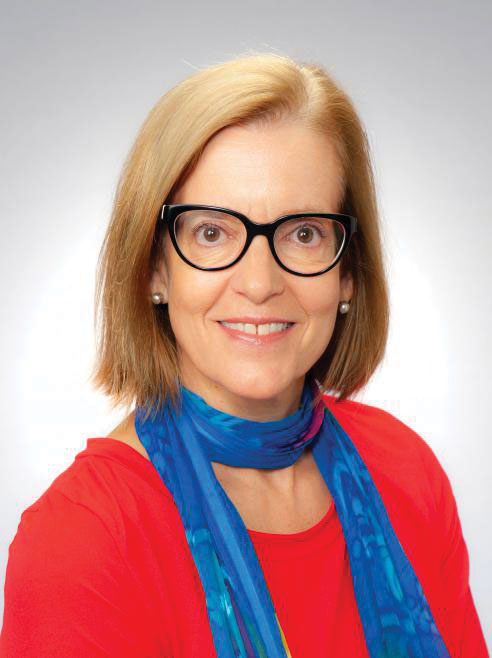MEN NEEDED TO SIGN UP—Tyrone Harvey talks with his doctor Gail Nunlee-Bland, M.D., about his diabetes. Despite gains in research diversity, men, particularly men of color, are still not signing up for research in the way that women engage. (AP/Jacquelyn Martin/File) (AP/Jacquelyn Martin/File)
For New Pittsburgh Courier
In 2002, the New England Journal of Medicine published findings about a diabetes prevention program that looked at key ways to reduce the risk of developing diabetes in people who were getting close to developing the disease. These ways included lifestyle changes and the use of prescription drugs like Metformin. Compared to a control group, researchers found diet and physical activity to be the best way to reduce diabetes risk. Since that time, programs and studies have taken the lead on getting people at-risk for diabetes to take charge of their own health.
The 2002 study looked at all groups, says Elizabeth Venditti, PhD, associate professor of psychiatry, School of Medicine, and associate professor of epidemiology, Graduate School of Public Health, University of Pittsburgh, who worked on the study 17 years ago.
“The lifestyle change worked in all groups,” Dr. Venditti says. “All racial and ethnic groups, young and old—they were able to lower their glucose values, either by taking Metformin or by being in a lifestyle program.”

In the Pittsburgh region, Dr. Venditti knew that finding groups of people who are at risk of getting diabetes and starting interventions earlier, rather than later, would result in better health for people in the future.
Being at risk for diabetes includes people who have an HbA1c (a common blood test used to diagnose type 1 and type 2 diabetes) between 5.7 and 6.4 percent—sometimes called “prediabetes.” People with an HbA1c higher than 6.4 percent are diagnosed with diabetes. Dr. Venditti notes that African American communities have high risk for both. The good news is that making small changes in what you eat, being active and losing some weight can reduce this risk a lot.
She is working to better meet folks where they are and to help them learn what is getting in the way of making healthy changes. Dr. Venditti’s Sustain-DPP (Diabetes Prevention Program) Research Study invites eligible older adults to improve health, physical functioning and well-being in hopes of finding better ways to deliver programs to people who are at high risk of developing health problems.
People who are 60 years old and older, overweight or obese and people whose doctors have told them they might have prediabetes are eligible to participate in the 24-month Sustain-DPP (Diabetes Prevention Program) Research Study with Dr. Venditti’s team. The first five weeks are in-person visits. The next 22 months are visits via telephone. She hopes that this format will make it easier for folks to join and to stay in the study.
The study’s lifestyle coaches work with people to talk about the foods that they can prepare and exercise that they can access. The goal is to be healthy but real. If they cannot join a gym, can they walk around the neighborhood? Can folks in the study do light chores around the house and yard about every 60 minutes and sit less? Are folks willing to think about 400-600 calories that they could cut out each day, and what would that look like? On the phone, the study team talks to people about barriers: What is getting in the way of healthy eating and exercise for you and your family?

The behavior-change approach takes the 2002 study and brings it to everyday life where gaps and high risk are present. In particular, Dr. Venditti says people who are 60 and older are often at a point where they want to focus on their own health and want to keep their independence. People 60 years old and older want to look good but also want to feel good. Their goals are not perfection but to take off some weight and change their cardiometabolic outcome, which refers to your chances of having diabetes, heart disease or stroke, Dr. Venditti says. When a couple of pounds come off, people have an easier time with everyday tasks, like getting up from the floor when playing with grandkids and carrying groceries. They have more energy, and their knees do not hurt as much.
Dr. Venditti said a lot has changed in research studies out of the University of Pittsburgh, in general. The biggest difference is the diversity. Studies (like hers) used to be made up of mostly white women, but now participant groups include a broad range of identities thanks to community-engaged research. The idea of community-engaged research is for researchers and communities to collaborate for the whole research timeline—from thinking about the questions to ask to getting the word out on the results.
Despite gains in research diversity, Dr. Venditti notes that men are still not signing up for research that she is conducting in the way that women engage. In the past when studies were made up of mostly women, men may have felt hesitant about showing up, Dr. Venditti says. She hopes more men—particularly men of color—sign up to share their experiences. Venditti says the phone component of her study, which allows people to participate without focusing on in-person, or group activities, could be the answer.
Groups are meeting all around the city—from the Vintage Center for Active Adults in East Liberty, to the Penn Hills Senior Center, to the Jewish Community Center in the South Hills.
Venditti lists a handful of other locations, too, emphasizing the dedication to “taking what works into the real world and recruiting from the community in many, many different types of neighborhoods.”
Like us at https://www.facebook.com/pages/New-Pittsburgh-Courier/143866755628836?ref=hl
Follow @NewPghCourier on Twitter https://twitter.com/NewPghCourier